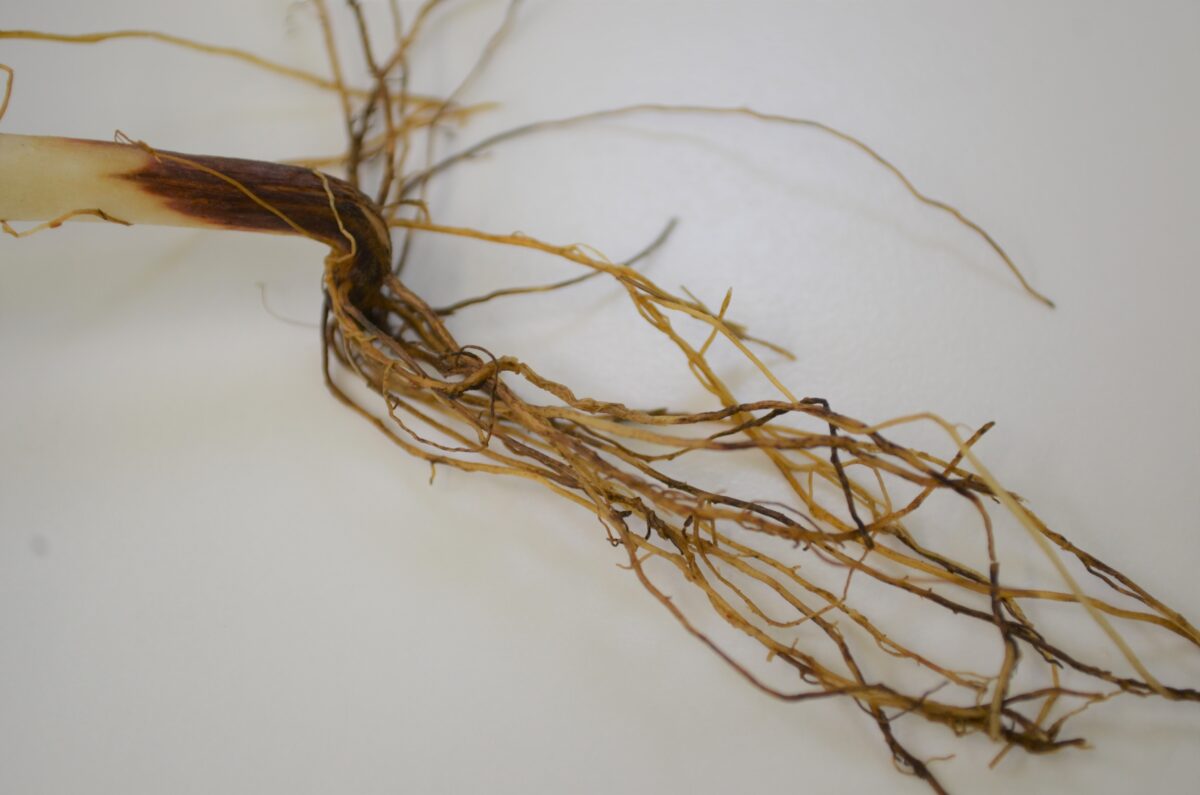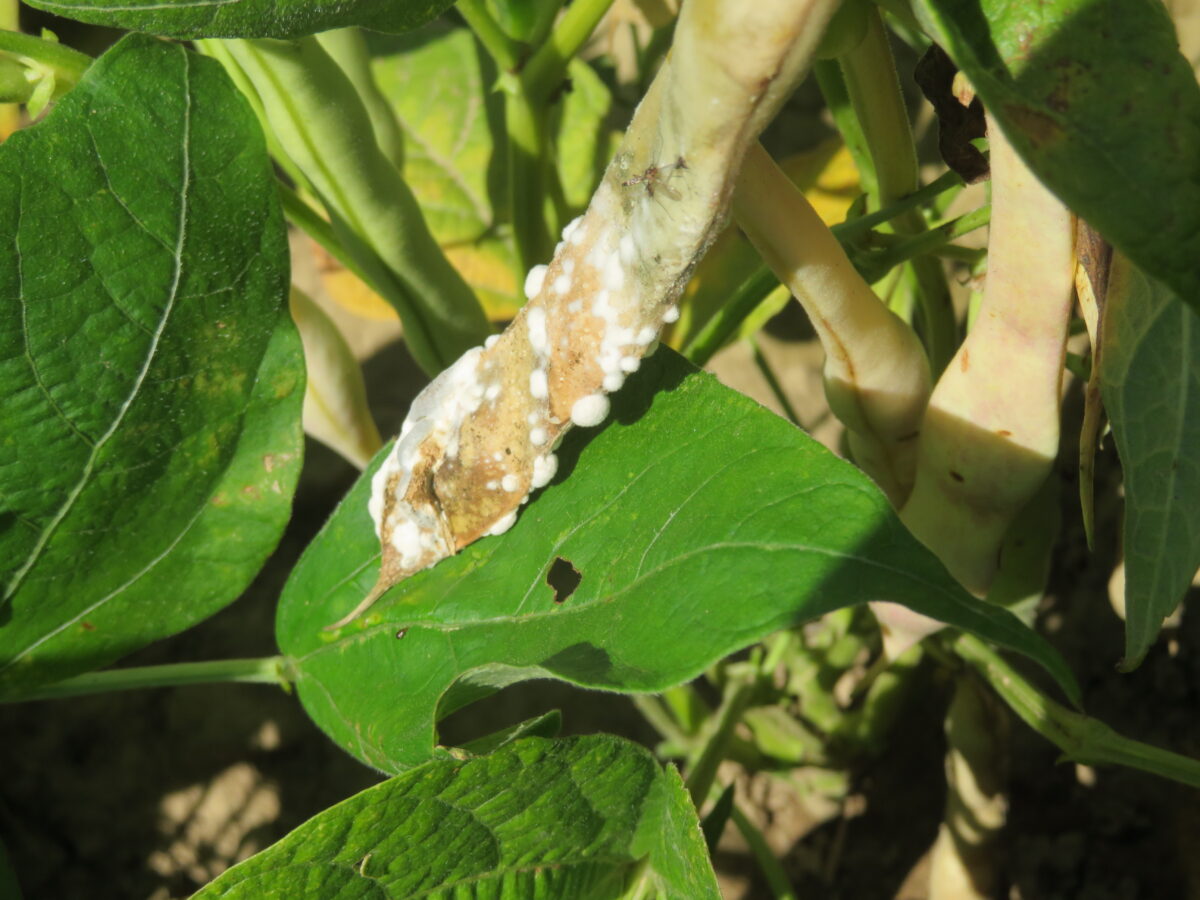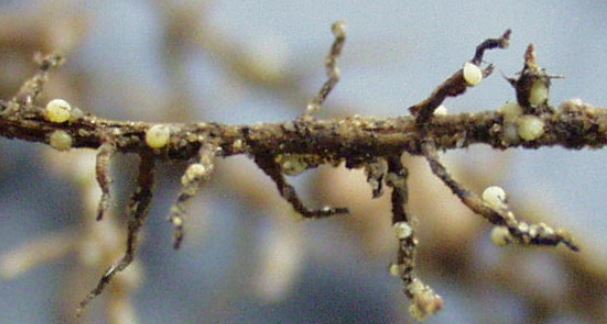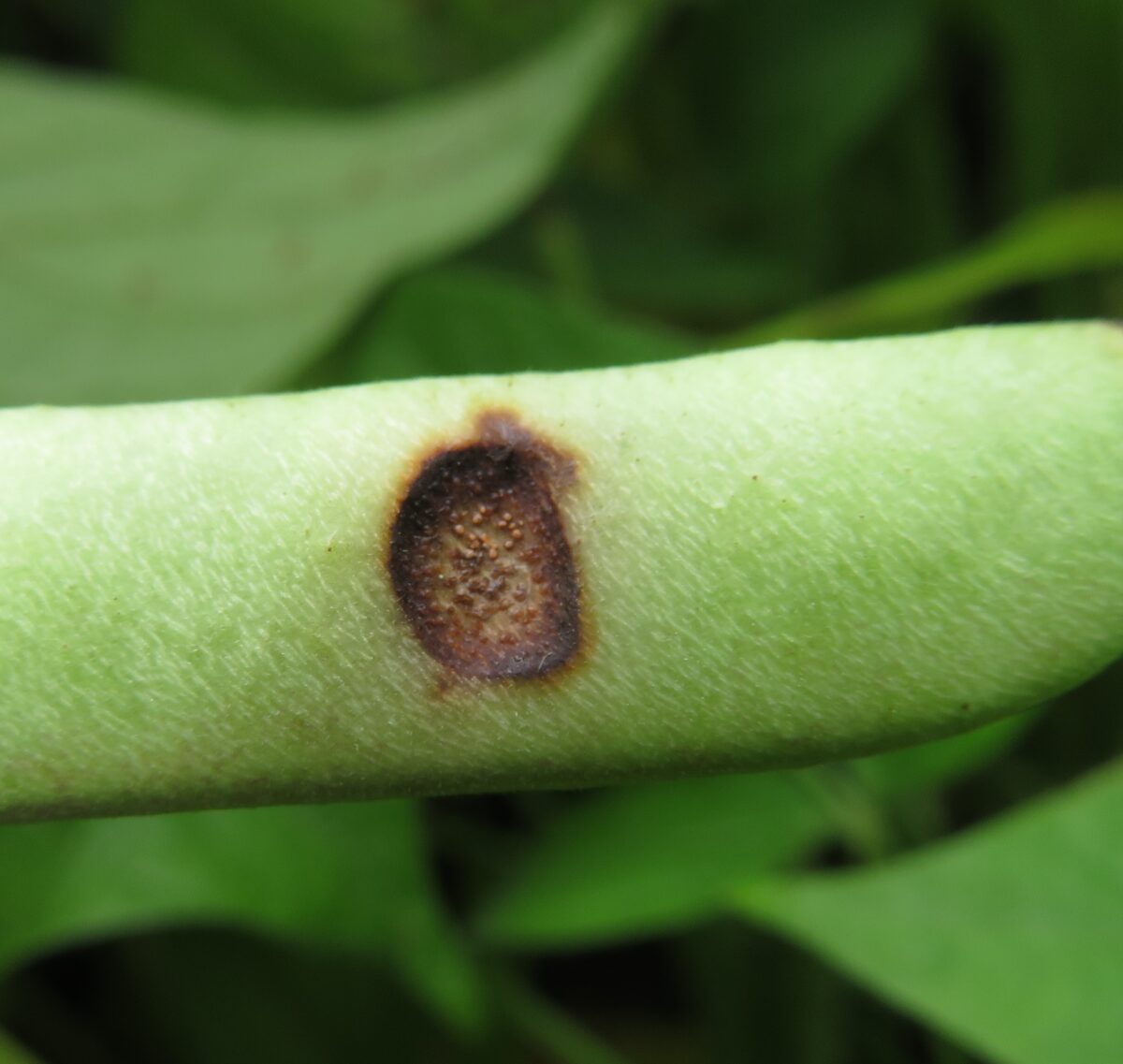Root rot complex (Fusarium solani, Rhizoctonia solani, Pythium spp. , Chalara basicola) Incidence Numerous organisms cause root rot symptoms on dry edible beans. In Ontario, the four main fungal pathogens are Fusarium, Pythium, Rhizoctonia and Chalara (formerly Tielaviopsis). These organisms can occur individually or in combination, as is often the case. This is referred to…Continue readingRoot Rot Complex
Author: Albert Tenuta
Pathologist-Field Crops, Ridgetown
White Mould
White Mould (Sclerotinia sclerotiorum) Incidence White mould is a difficult disease to predict, although most years the appearance of the disease is higher in dry edible beans than in soybeans. The disease is most damaging when cool (moderate), wet conditions occur during flowering or near harvest. Appearance Initial infection takes place on plant tissue such…Continue readingWhite Mould
Soybean Cyst Nematode (SCN)
Soybean Cyst Nematode (Heterodera glycines) Although soybeans are the major host, soybean cyst nematode (SCN) has a wide range of hosts that includes dry edible beans. SCN has been increasing in edible bean-producing areas of the province. Planting dry edible beans into SCN-infested fields can result in an increase in root rot complex infection, since…Continue readingSoybean Cyst Nematode (SCN)
Anthracnose
Anthracnose (Colletotrichum lindemuthianum) Incidence Anthracnose is a significant and important dry edible bean disease in Ontario and has been managed with resistant varieties, clean seed and seed treatments. In fields where the disease does develop, as a result of new strains of fungus or from the use of infected seed, significant damage can occur. Appearance…Continue readingAnthracnose
Bean Common Mosaic Virus (BCMV)
Incidence Bean common mosaic virus (BCMV) has been found wherever dry edible beans are grown in the province. In some years, the disease can be severe in individual fields. Appearance Infection of dry edible beans with the virus can cause various symptoms. Leaves of infected plants have a mosaic of light yellow-green and dark green…Continue readingBean Common Mosaic Virus (BCMV)




